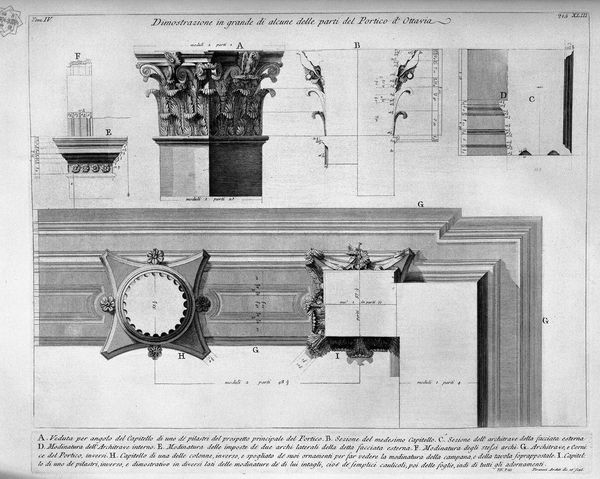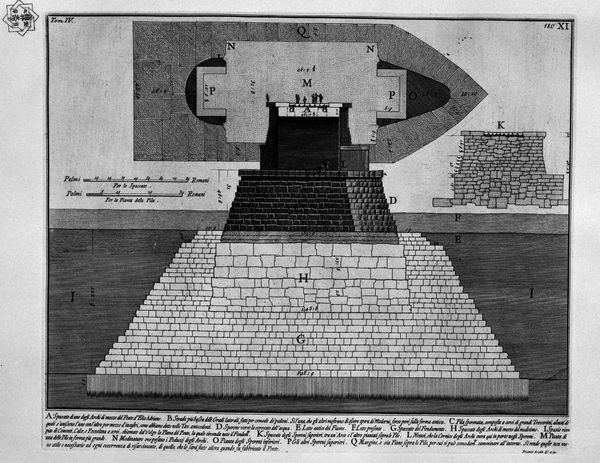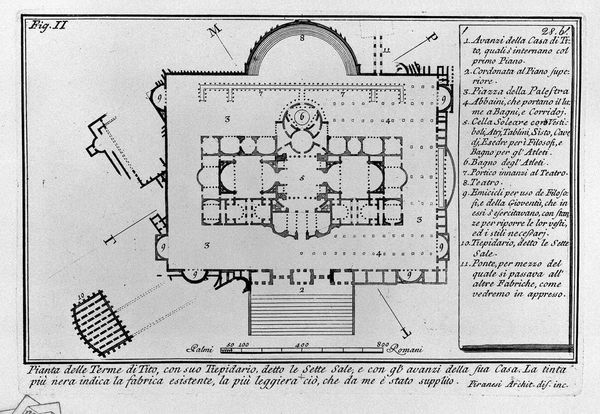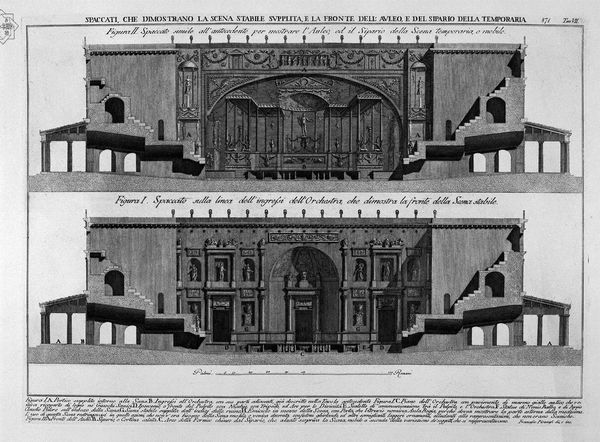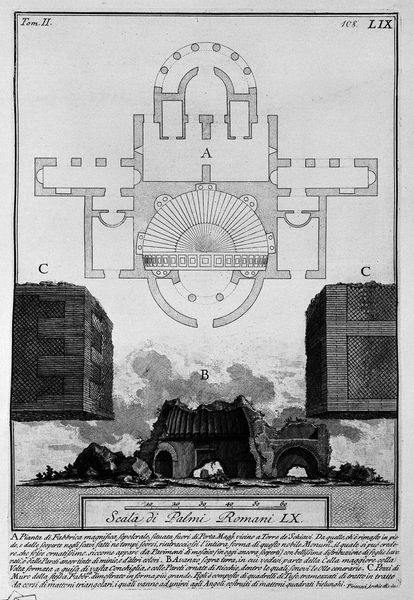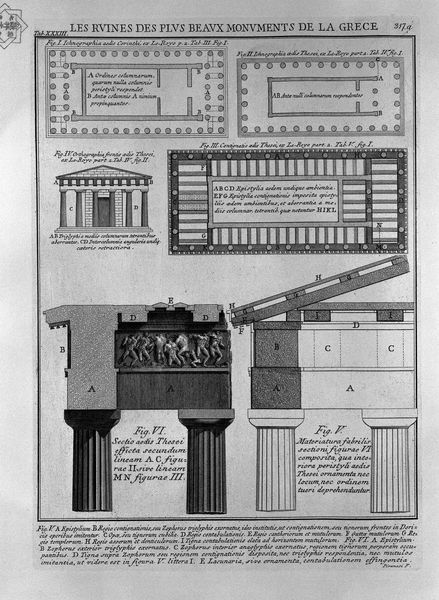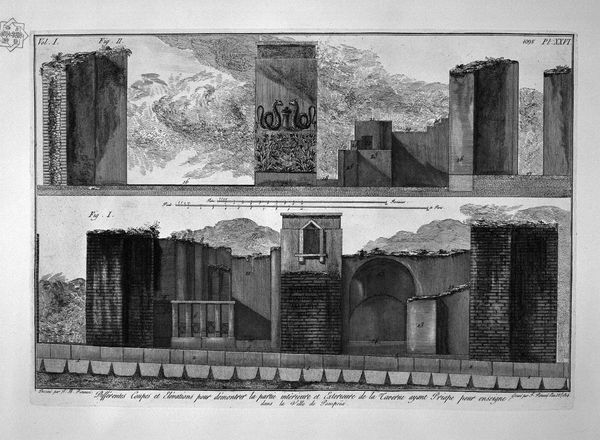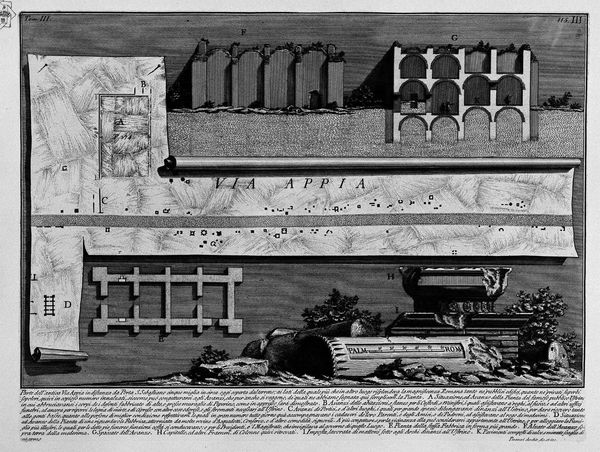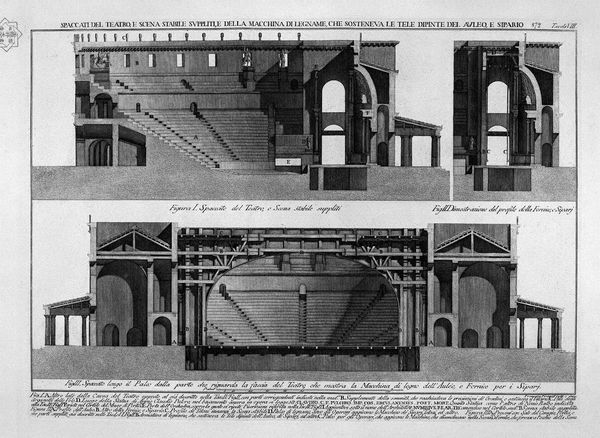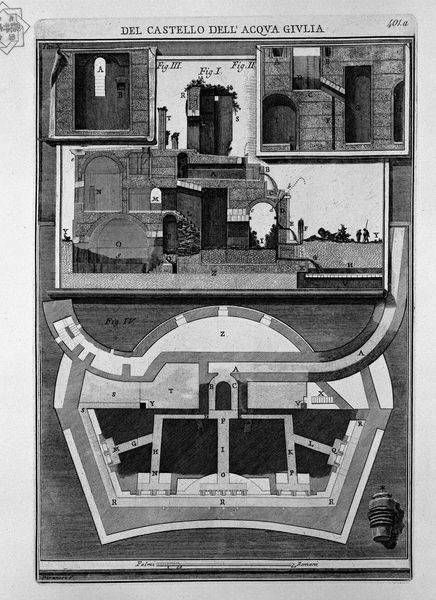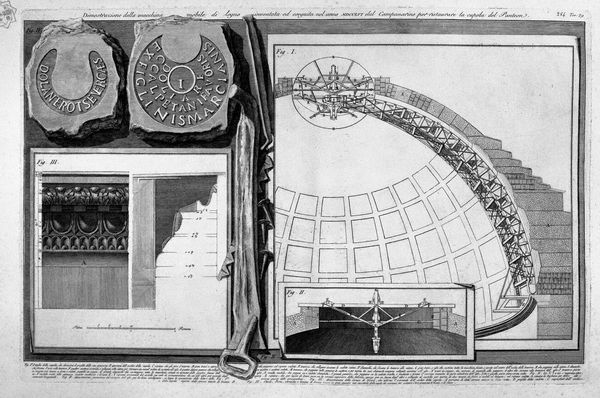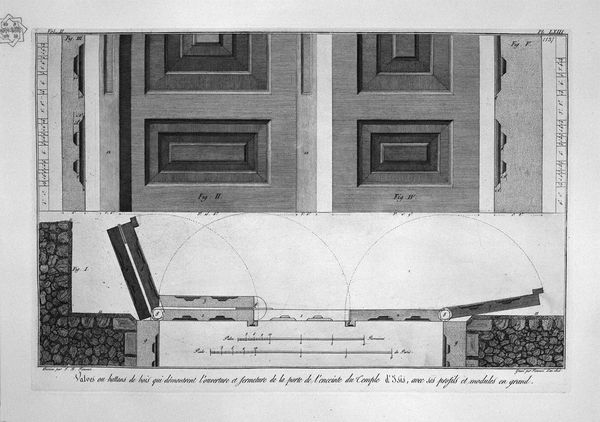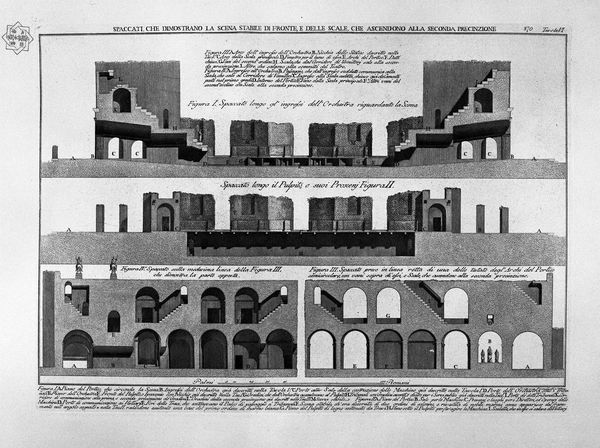
The Roman antiquities, t. 3, Plate IX. Plan of the tomb outside Porta S. Sebastian on the ancient Appian Way in the Vineyard of the Buonamici from Capo di Bove.
0:00
0:00
drawing, etching, engraving, architecture
#
drawing
#
neoclacissism
#
architectural landscape
#
etching
#
sculpture
#
holy-places
#
architectural form
#
historic architecture
#
traditional architecture
#
geometric
#
ancient-mediterranean
#
arch
#
carved
#
architectural
#
history-painting
#
engraving
#
architecture
#
historical building
#
statue
Copyright: Public domain
This is Giovanni Battista Piranesi’s engraving of a tomb outside Porta S. Sebastian, made sometime before 1778. Piranesi lived in Venice and Rome, where he worked as an architect, antiquarian, and printmaker. Piranesi's images weren’t just documentation; they reflected his deep engagement with ancient Rome. His vision was shaped by the Enlightenment's fascination with classical antiquity, yet his interpretations were far from straightforward. Consider the grand scale and dramatic perspectives that define his work. He wasn't merely illustrating ruins, but rather, he was reimagining the past through the lens of his present. His dramatic, detailed views of Roman structures capture both the grandeur and the decay of these ancient monuments. Look at the sharp contrasts between light and shadow, which create a sense of drama and depth. Piranesi’s work reminds us that history is not a fixed narrative, but rather, a collection of stories filtered through the eyes of those who interpret it.
Comments
No comments
Be the first to comment and join the conversation on the ultimate creative platform.

